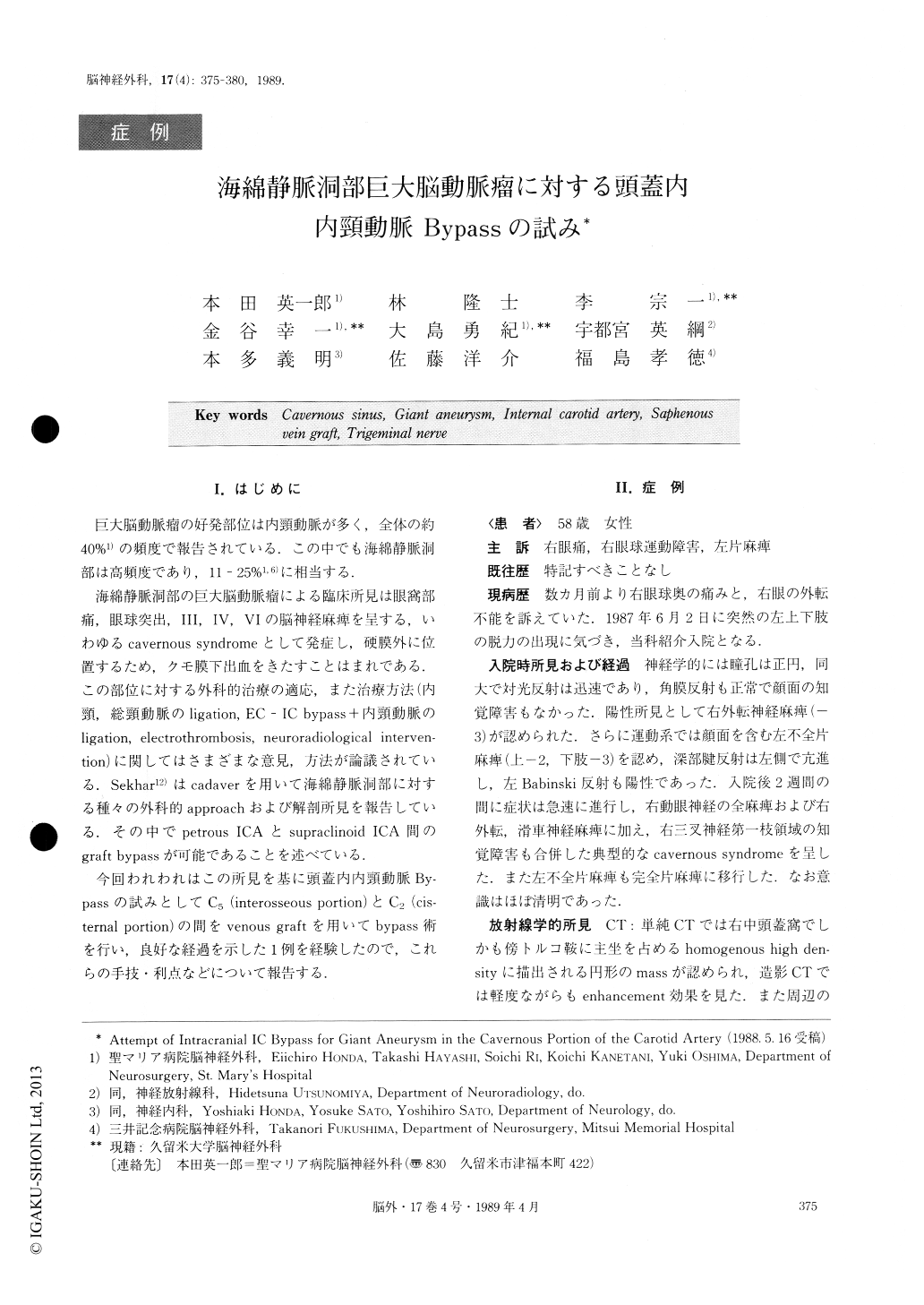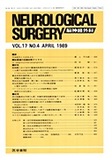Japanese
English
- 有料閲覧
- Abstract 文献概要
- 1ページ目 Look Inside
I.はじめに
巨大脳動脈瘤の好発部位は内頸動脈が多く,全体の約40%1)の頻度で報告されている.この中でも海綿静脈洞部は高頻度であり,11-25%1,6)に相当する.
海綿静脈洞部の巨大脳動脈瘤による臨床所見は眼窩部痛,眼球突出,III,IV,VIの脳神経麻痺を呈する,いわゆるcavernous syndromeとして発症し,硬膜外に位置するため,クモ膜下出血をきたすことはまれである.この部位に対する外科的治療の適応,また治療方法(内頸,総頸動脈のligation, EC-IC bypass+内頸動脈のligation, electrothrombosis, neuroradiological interven—tion)に関してはさまざまな意見,方法が論議されている.Sekhar12)はcadaverを用いて海綿静脈洞部に対する種々の外科的approachおよび解剖所見を報告している.その中でpetrous ICAとsupraclinoid ICA間のgraft bypassが可能であることを述べている.
今回われわれはこの所見を基に頭蓋内内頸動脈By—passの試みとしてC5(interosseous portion)とC2(cis—ternal portion)の間をvenous graftを用いてbypass術を行い,良好な経過を示した1例を経験したので,これらの手技・利点などについて報告する.
We report here, a novel method for internal carotid (IC) bypass between C2 and C5, by using the auto-logous saphenous vein.
The patient was a 58 year-old female, complaining of pain and motor disturbance in her right ocular region. She suddenly developed left-sided hemiparesis during her stay in our hospital.
The following CT examination demonstrated a high density homogenous round mass, which occupied the right side of the parasellar region with no perifocal ede-ma. The contrast enhancement CT, however, suggested there was still a certain degree of blood flow in the mass.

Copyright © 1989, Igaku-Shoin Ltd. All rights reserved.


